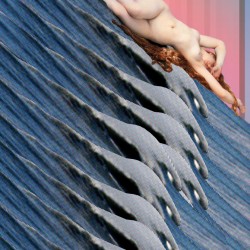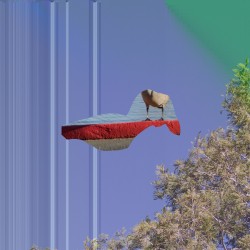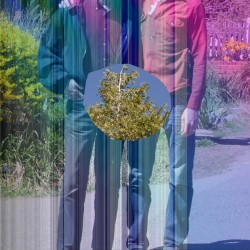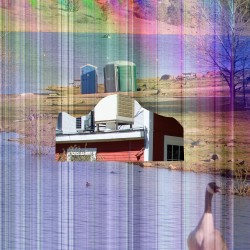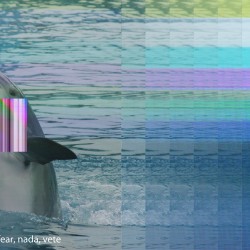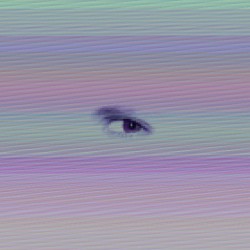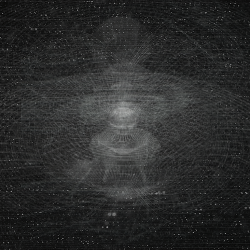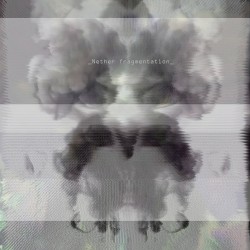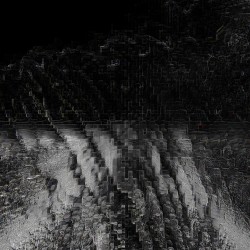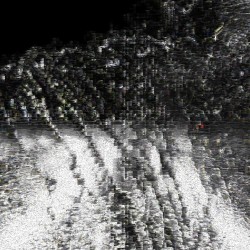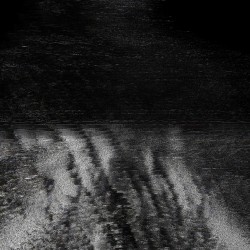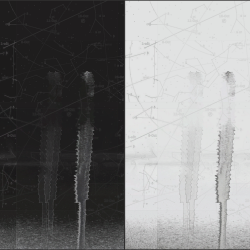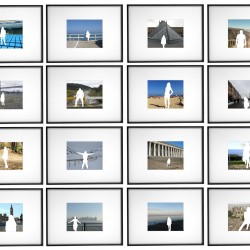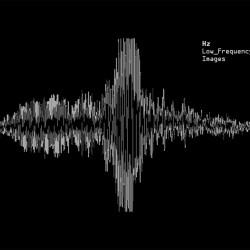Between September and November of 2014, Galería MÜ will present three exhibitions that take on the theme of photographic production in the contemporary world. We will explore three forms of creation that include digital use or manipulation, analog use in the capture and the use of the scanner in image construction. This series of exhibitions shows the time needed to produce an image, not only from its theoretic side, but also in its formal creation.
All of the photographers presented are artists that use technique as a point of departure for presenting their ideas. But it’s evident that the techniques bring with them certain semiotic references with each medium, creating a natural relation that is not coincidental – playing between how we think and how we create.
1:Pixel is an exhibition that creates a new link between direct and pictorial photography, using the computer as a modern laboratory in order to create a surreal vision. The images that make up this exhibition are constructed and use pixels (the technological comparison to the grain) in their creation.
Though each artist has their own concept, there’s an underlying connection due to the existence of the pixel. A pixel, a word given to refer to the creation of an image on a screen, is the smallest controllable point of a raster image (an image defined by a grid format) and is represented by a color defined by a three or four color scale. When one of them is combined with other pixels, they create what we understand as an image: the mix of various squares of colors and tones that trick our brain into understanding an image – in the same way that Neo-Impressionism or Pointillism worked.
When the artist changes the color of a pixel, the photograph is usually considered to be a manipulation. Until what point does the change of these pixels allow for an image to be considered a digital work of art? The works in this exhibition don’t only use photography as a basis for their production, but require that there’s some remnant of its existence in the final product. For all of them, it’s important to consider their works as photography.
In the case of artist Carolina Montejo (Bucaramanga, 1981), the use of digital manipulation has always had importance in her work. Recently, she has continued her investigation of the function of our brain in terms of memory and the unconscious and has given more importance to the presence of the pixel in her own photographs in order to combine them with found photographs and other digital content. With this, it gives reference not only to the fragmentation and reinterpretation of our memory, but also to the resulting effects of the digital world on it. Using her own dreams as inspiration, she processes her images through a technological system and the manipulation of their own code (when an image becomes digital, its creation as a raster image is created by a code of symbols). The photos become evidence of a memory, a transformation of information that has passed through countless synapses in our brain.
Paola Gaona (Popayán, 1986) is a member of Collective 83, a group of artists and cultural promoters that create curatorial projects in non-conventional spaces. In her work, she has produced drawings, photographs and videos that often challenge how we interpret elements in creating a work of art. The works from Hz / Low_Frequency are based on the imperceptible tones found below the audible human spectrum and also on those sounds that, though perceptible, are usually linked to the musical genres represented by noise and dissonance. Consequently, the artist assigns ideas and sentiments to those sounds and combines them by way of the digital manipulation of images that already exist, finally producing a visual effect to the sense of sound.
The photographer Mateo Rodríguez (Bogotá, 1988) explores the relation we have with the world that surrounds us through the camera. Recently, he has explored the social effects that the digital world has on our individual and collective conduct. His series Common Denominator presents images appropriated by social networks, as such, pixilated, with the figures removed. Rodríguez takes on a theme that is reflected in all the people that maintain a virtual life, questioning the influence of current democratic photography. He notes that “until recently, these photographs were confined to the personal space through family albums and picture frames.” Now, the action of taking a photograph isn’t about capturing an unforgettable moment to be remembered later, but rather to show that a moment was experienced. Upon eliminating the figure from this action, the photographic act and the experiences become the common denominator of the digital social life.

